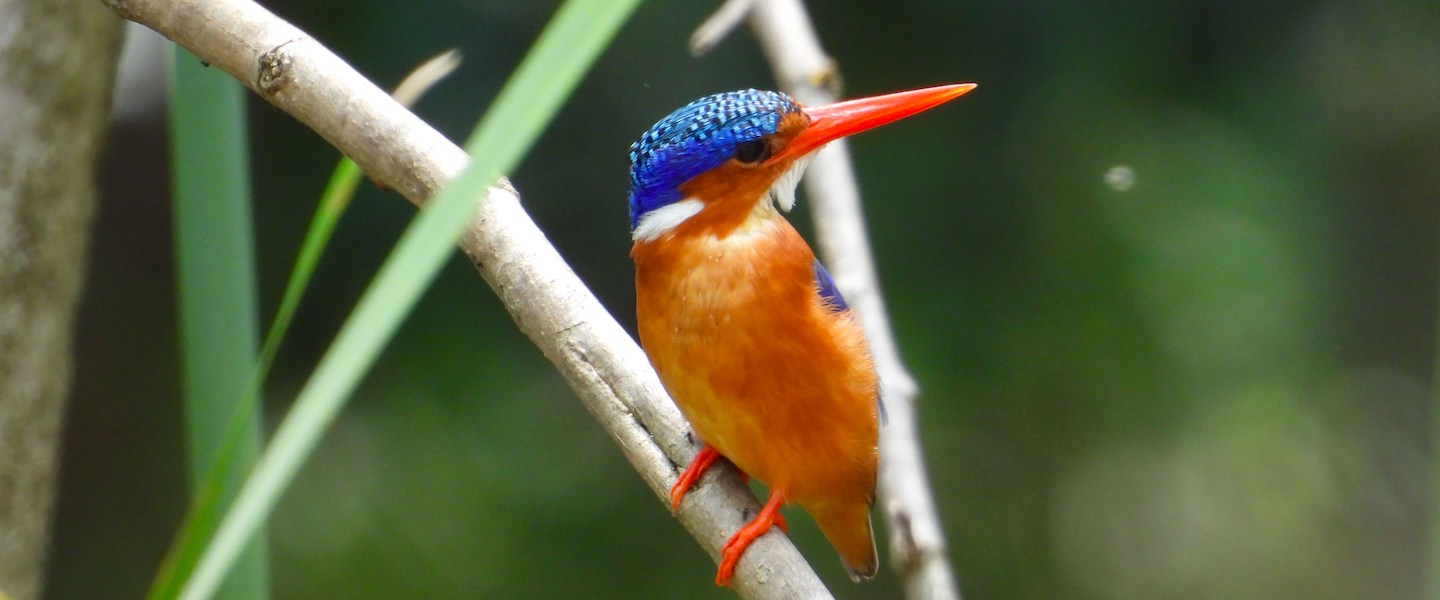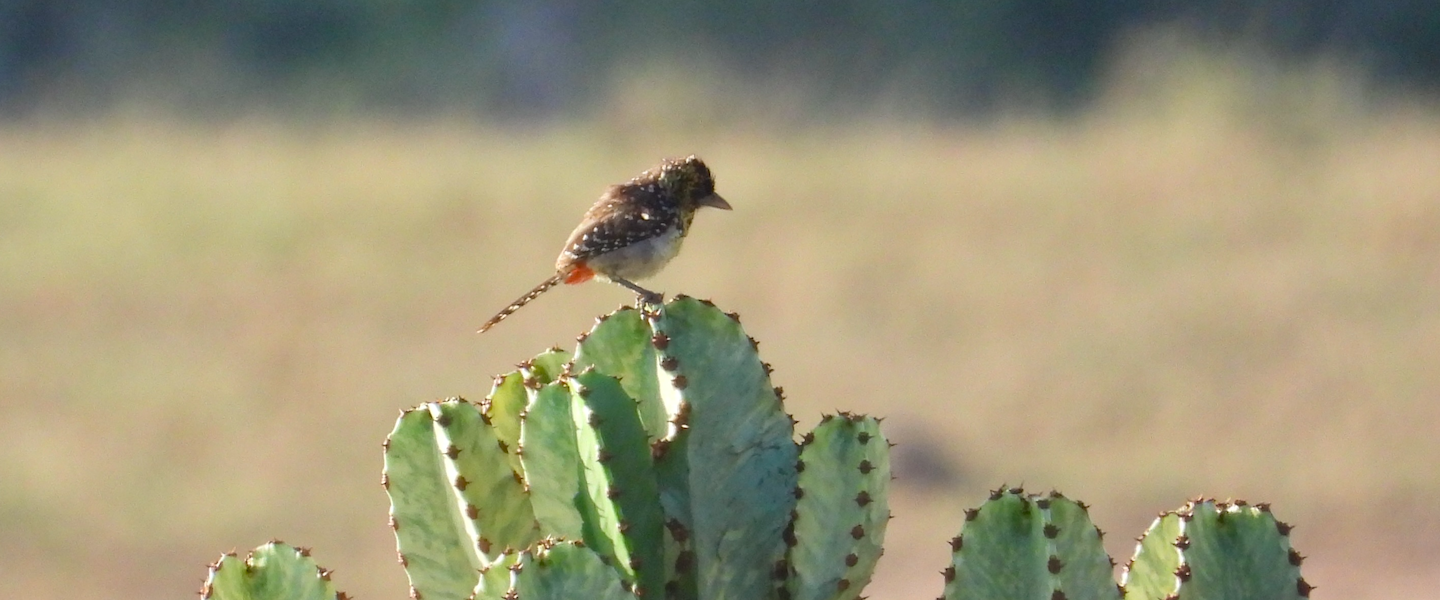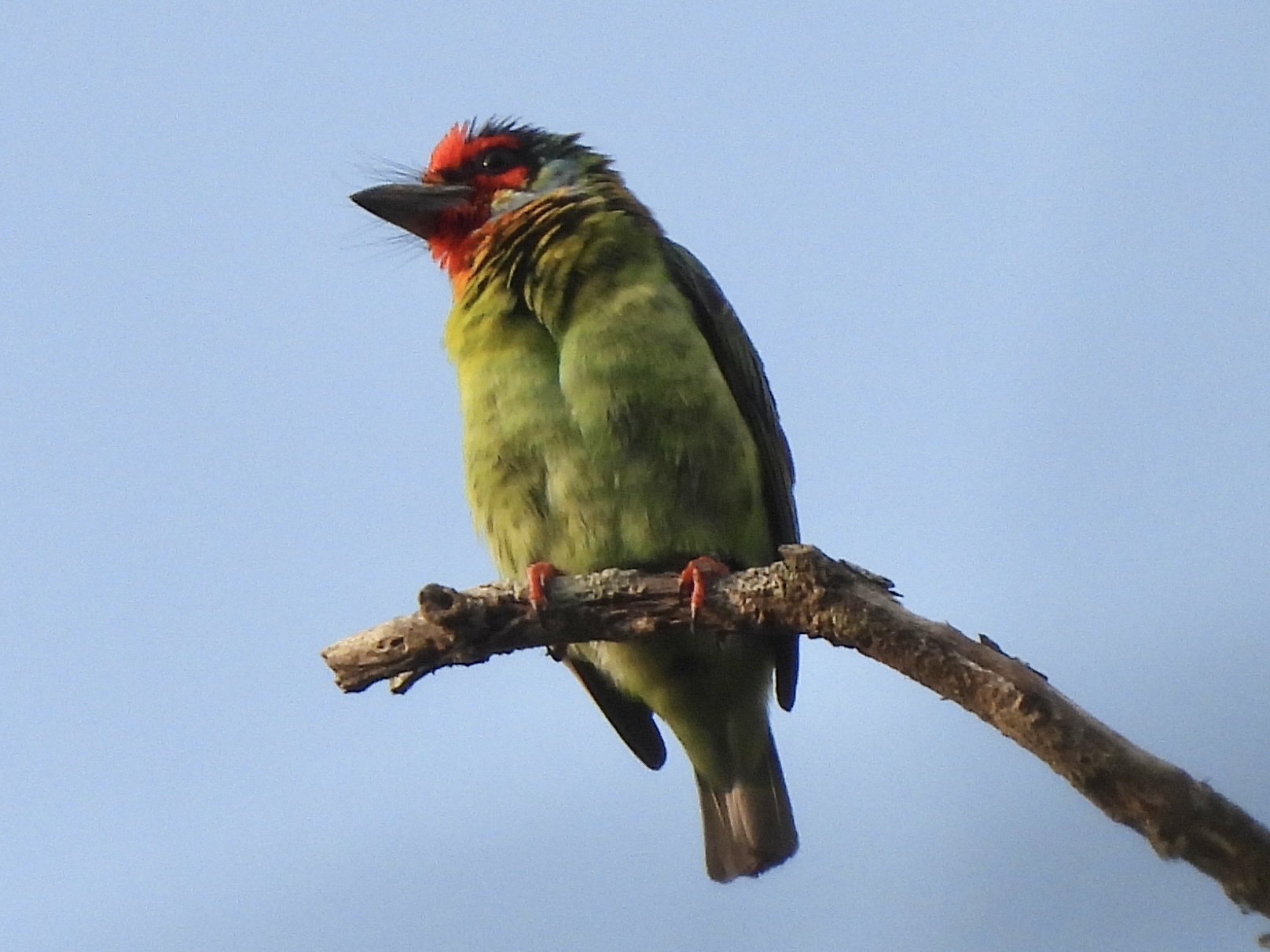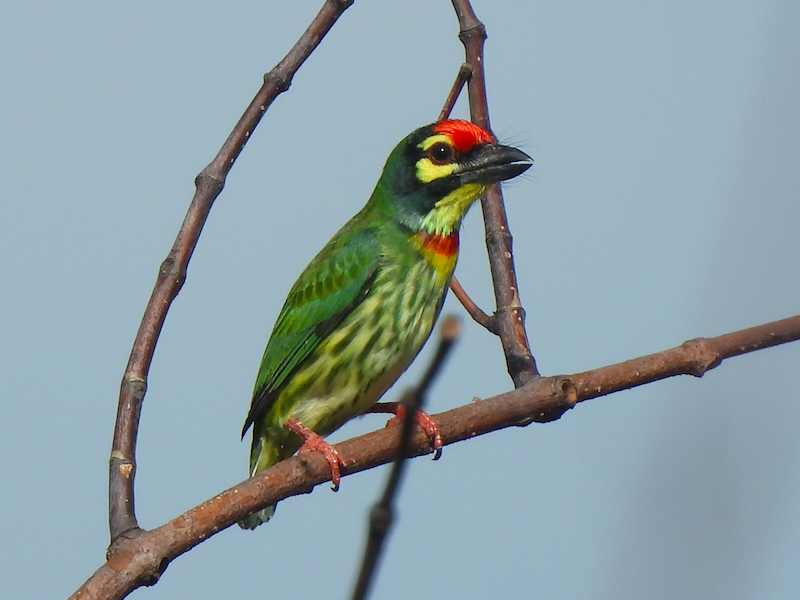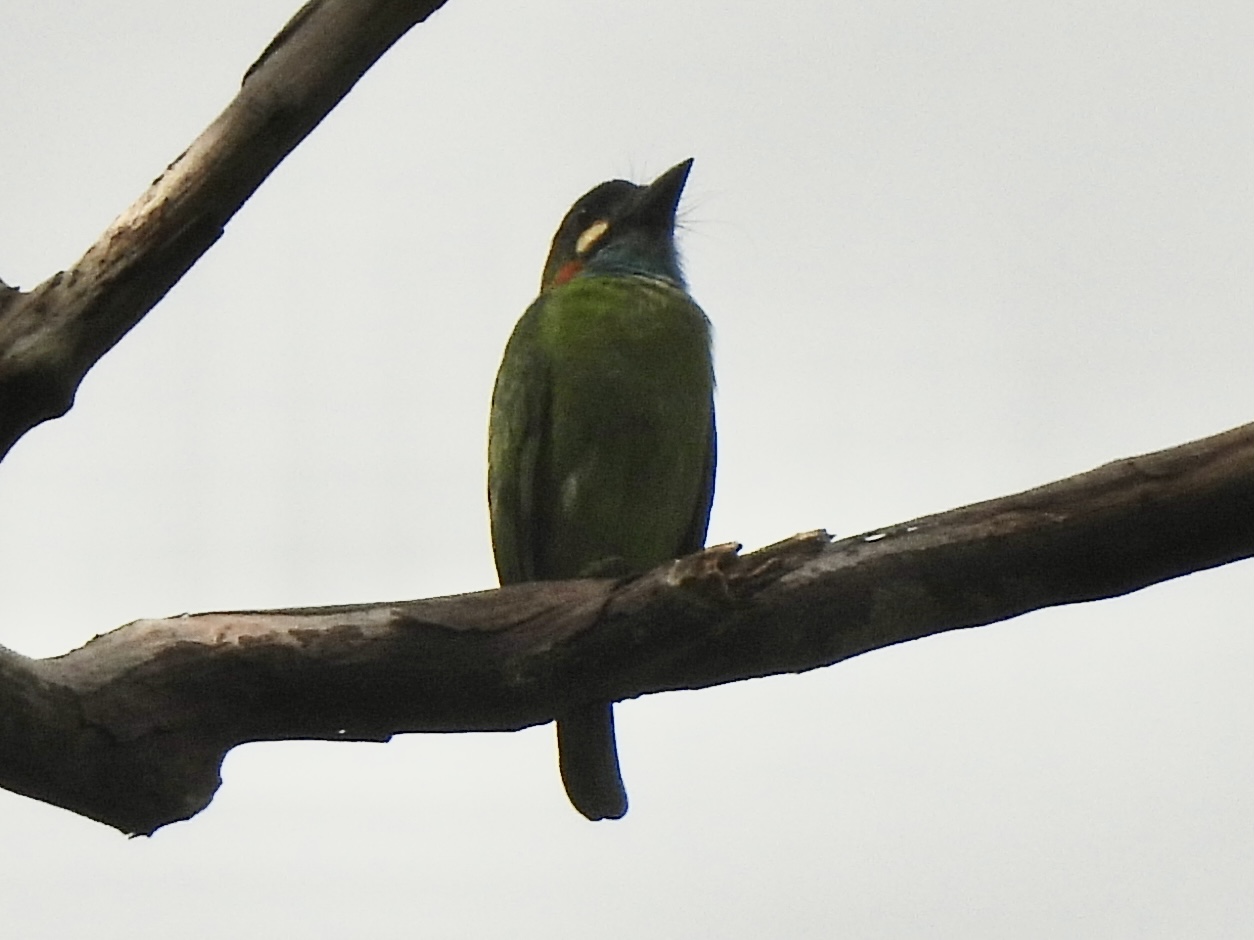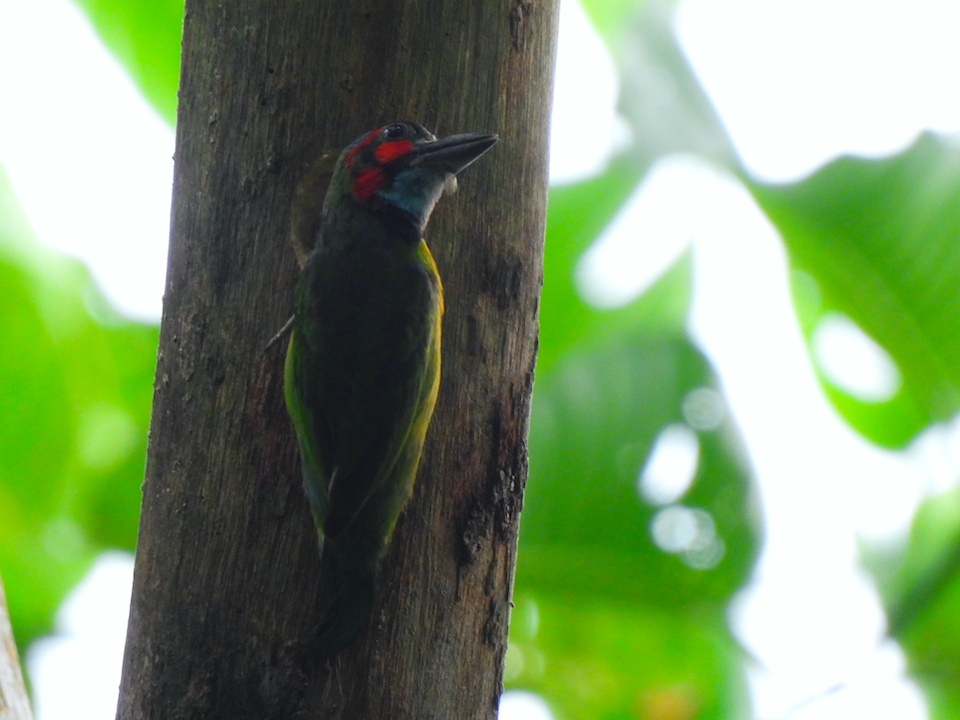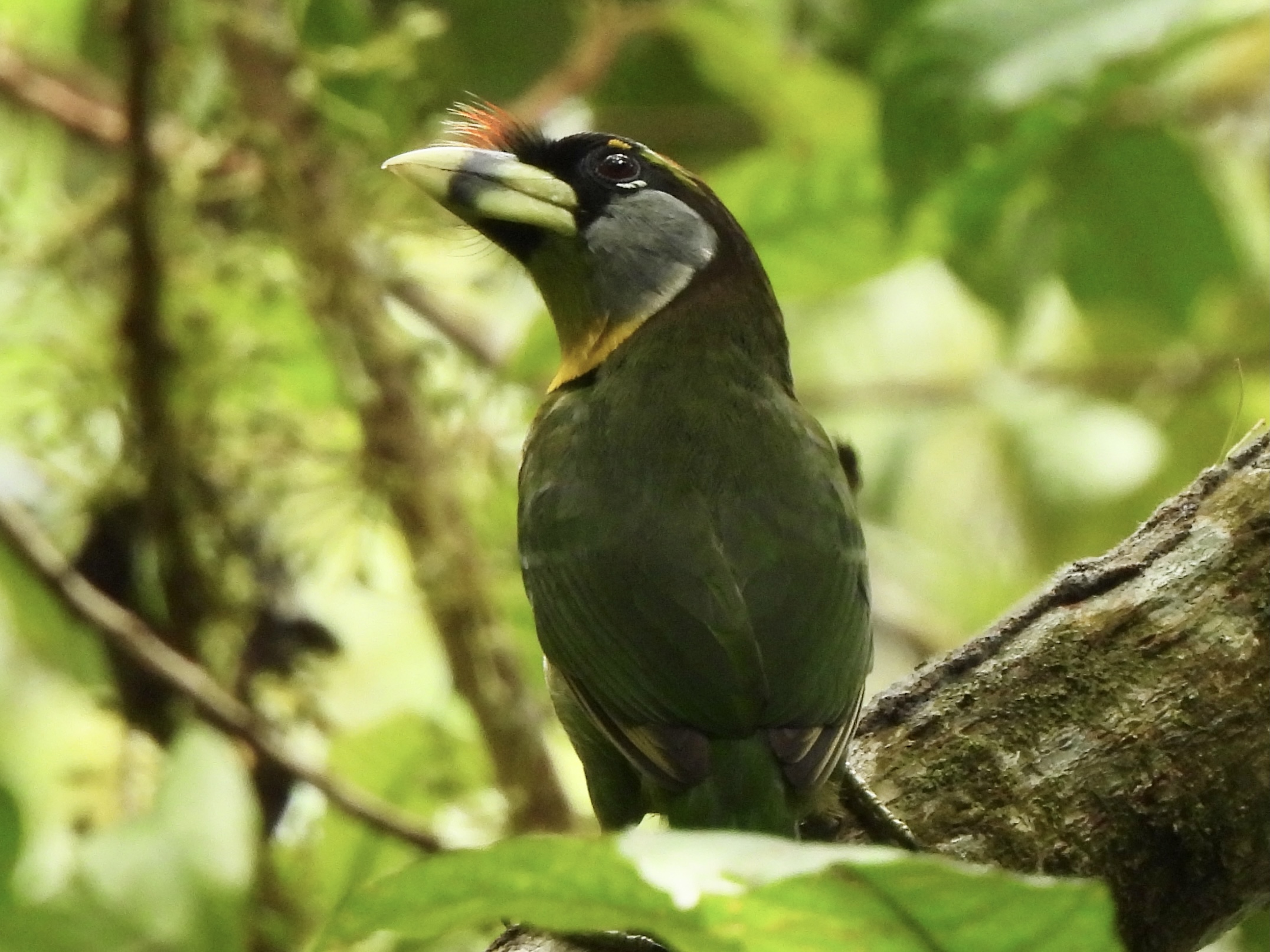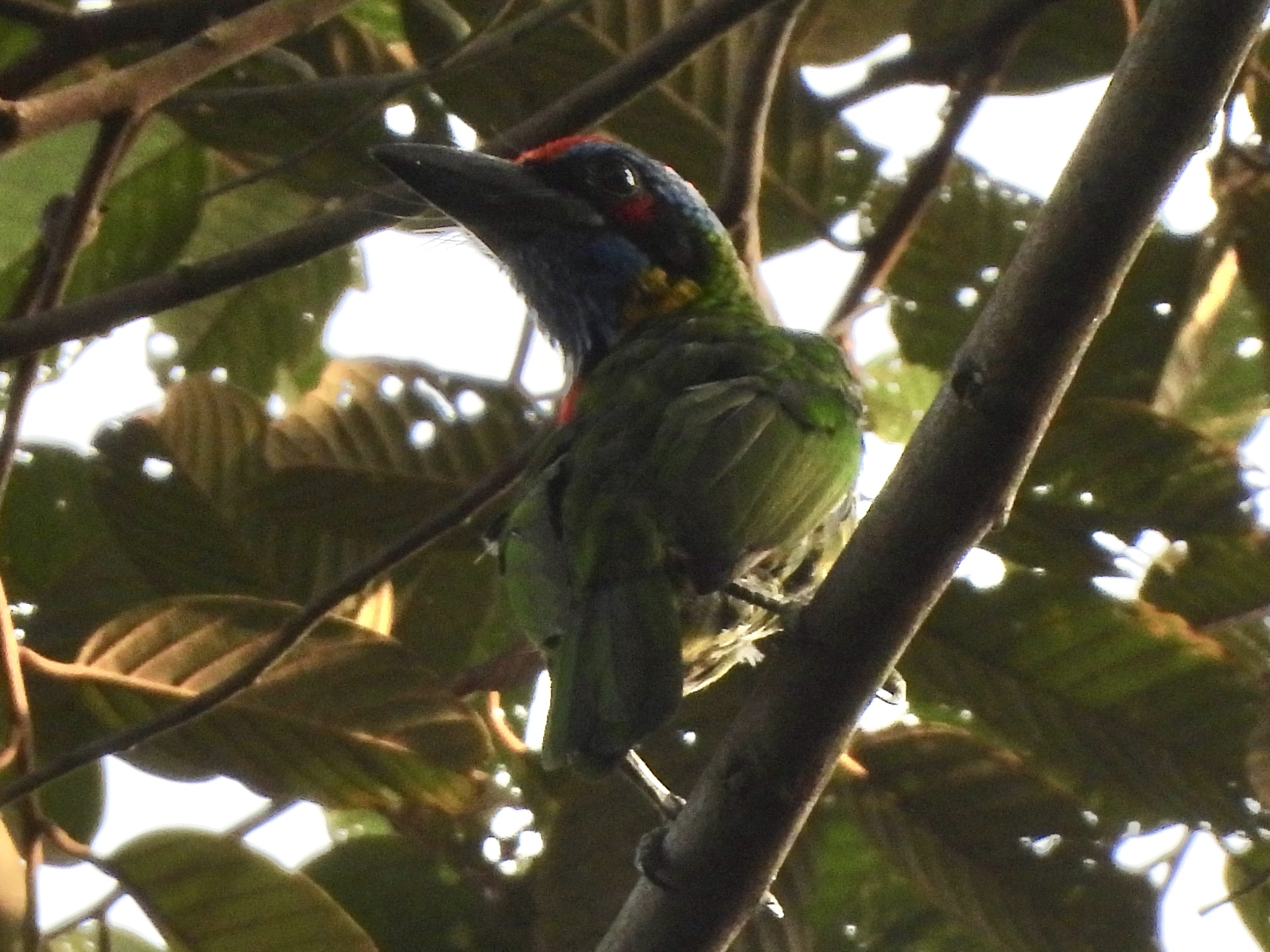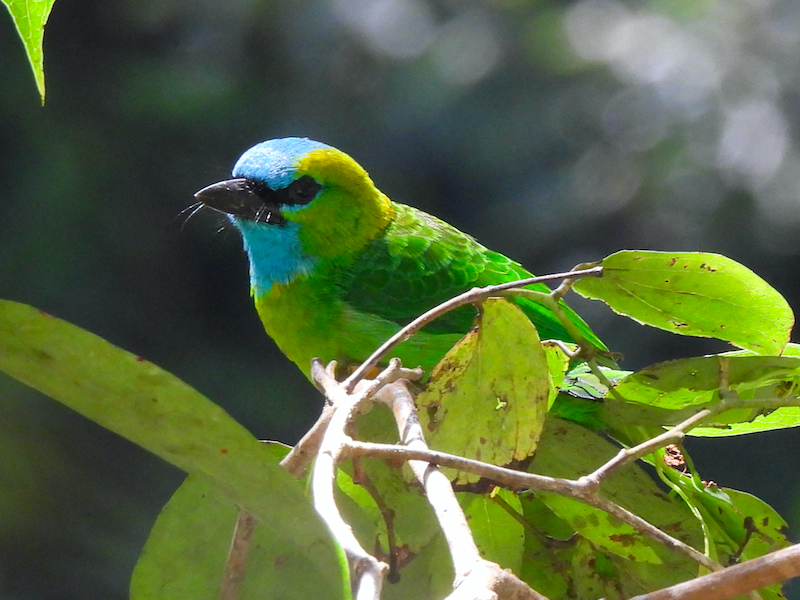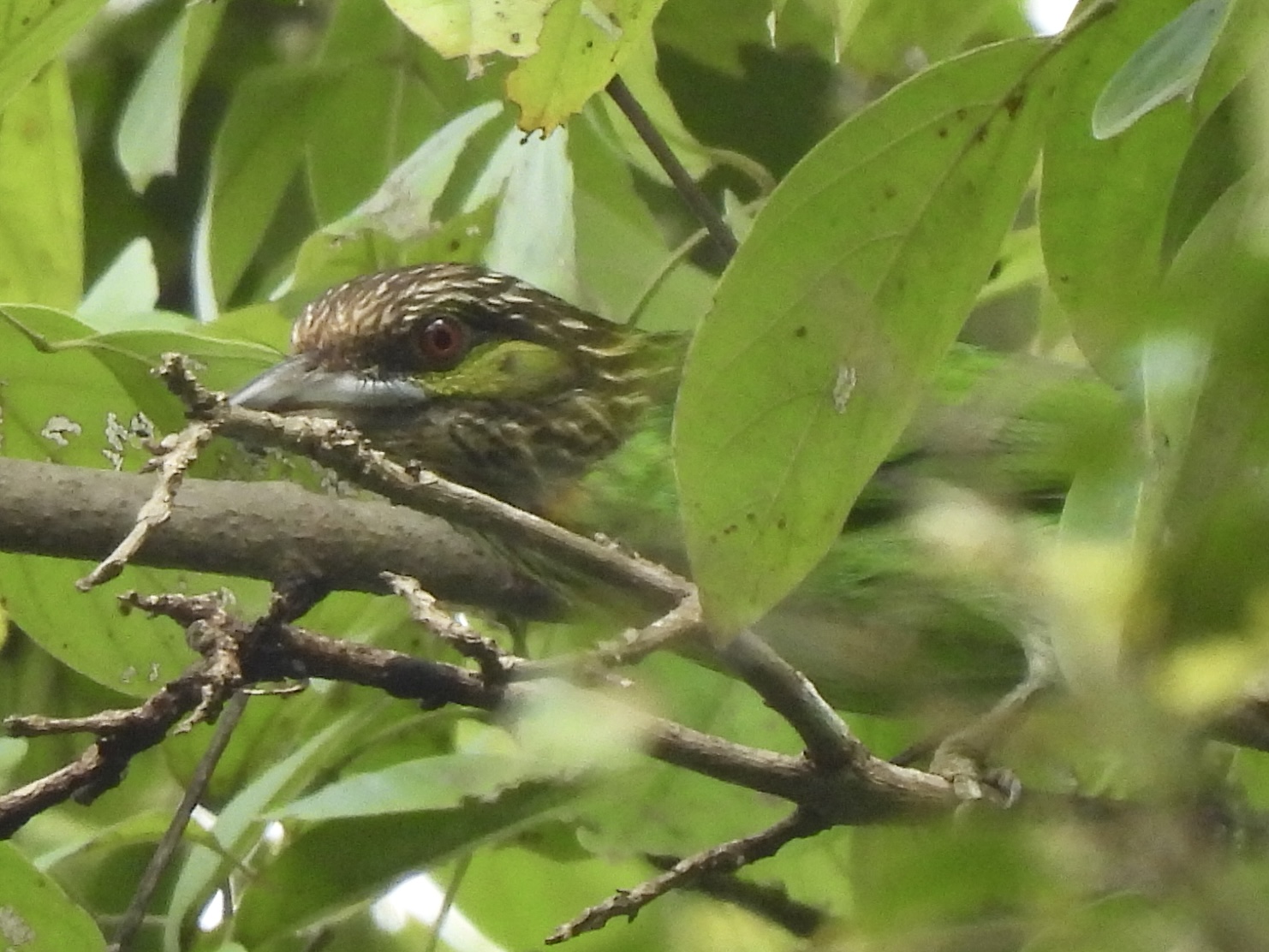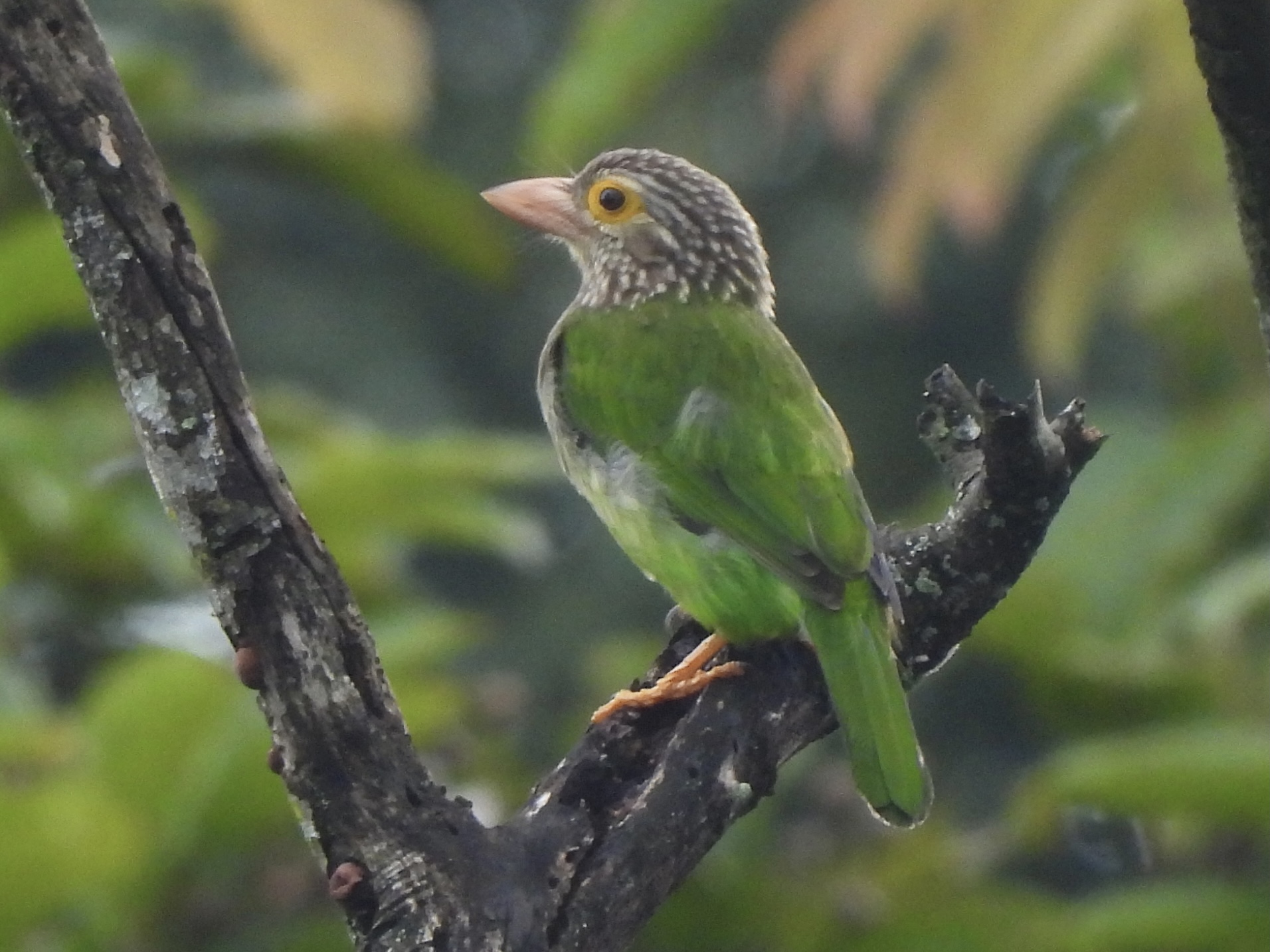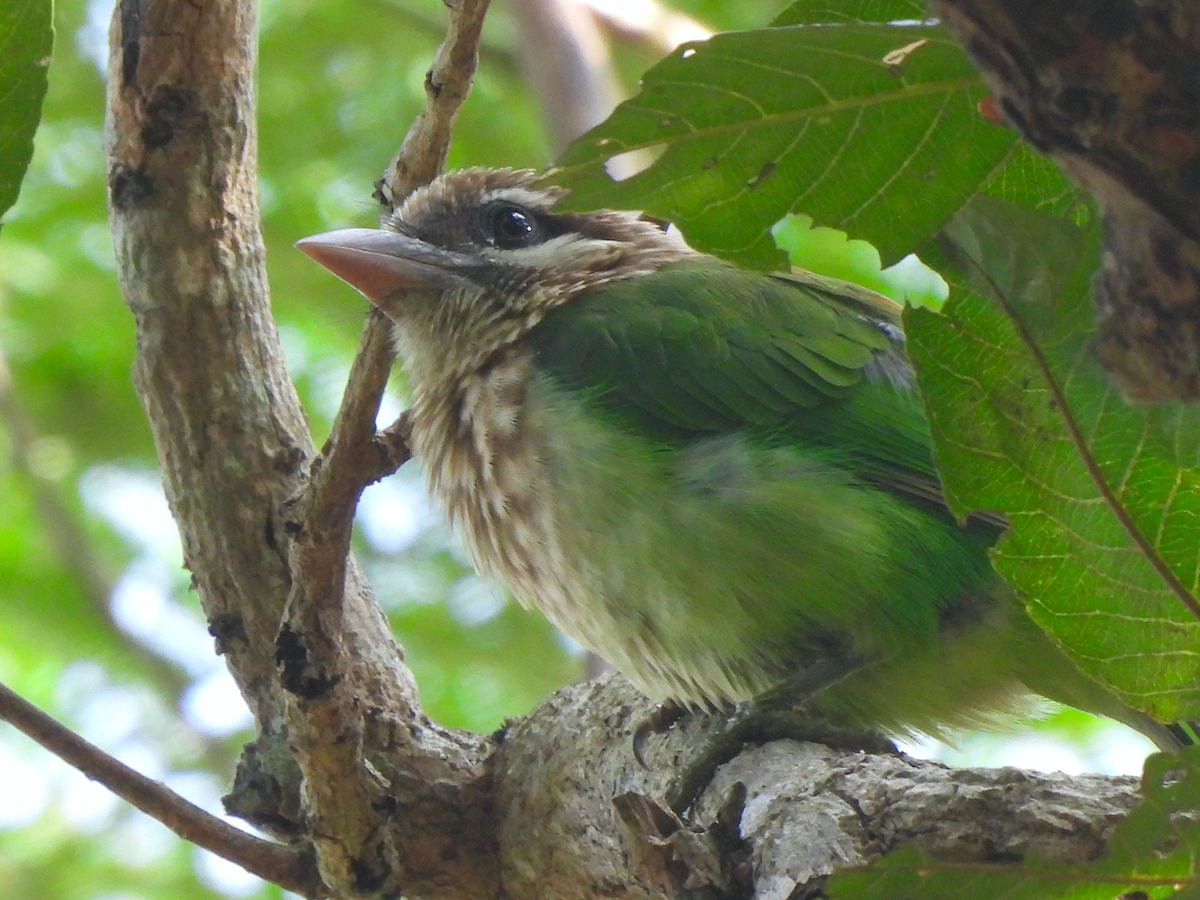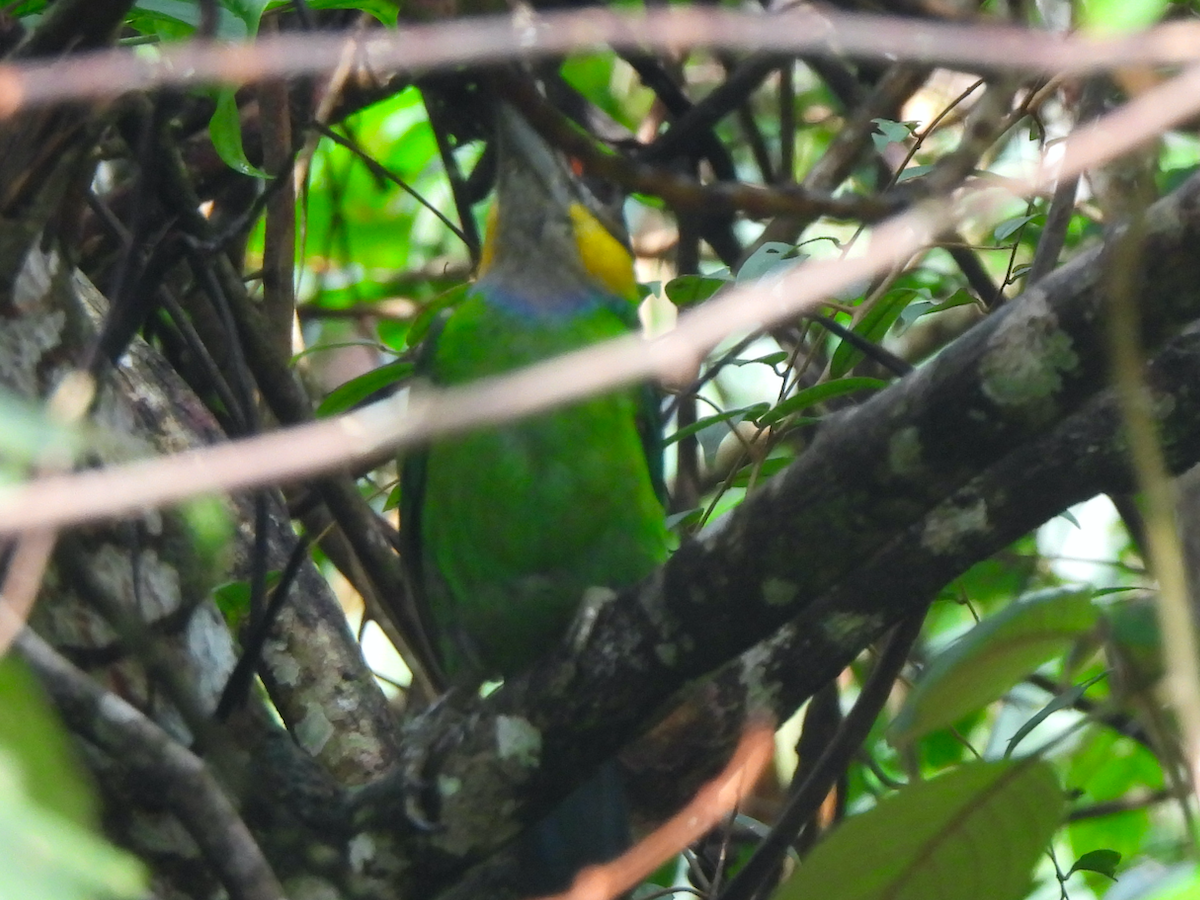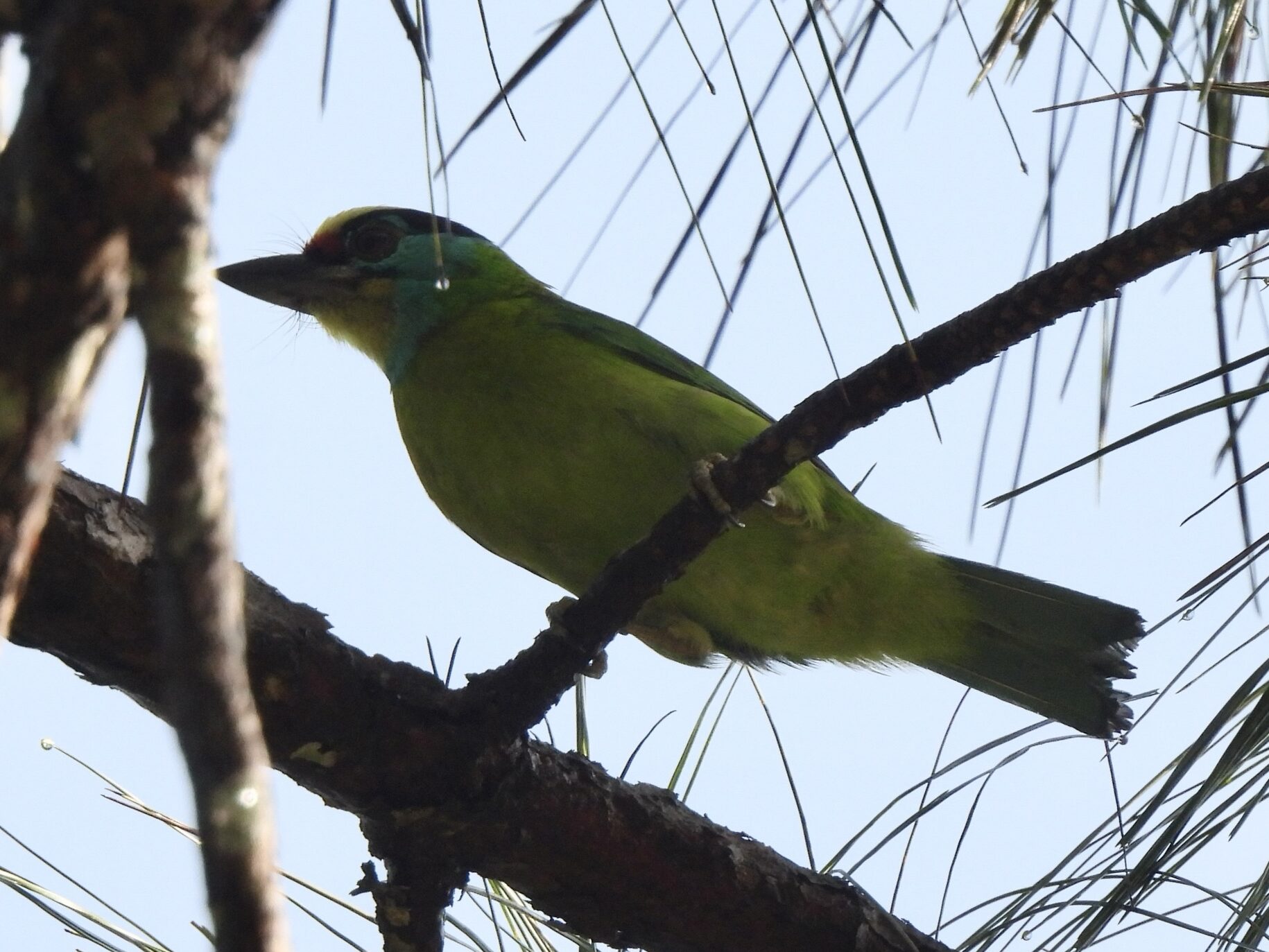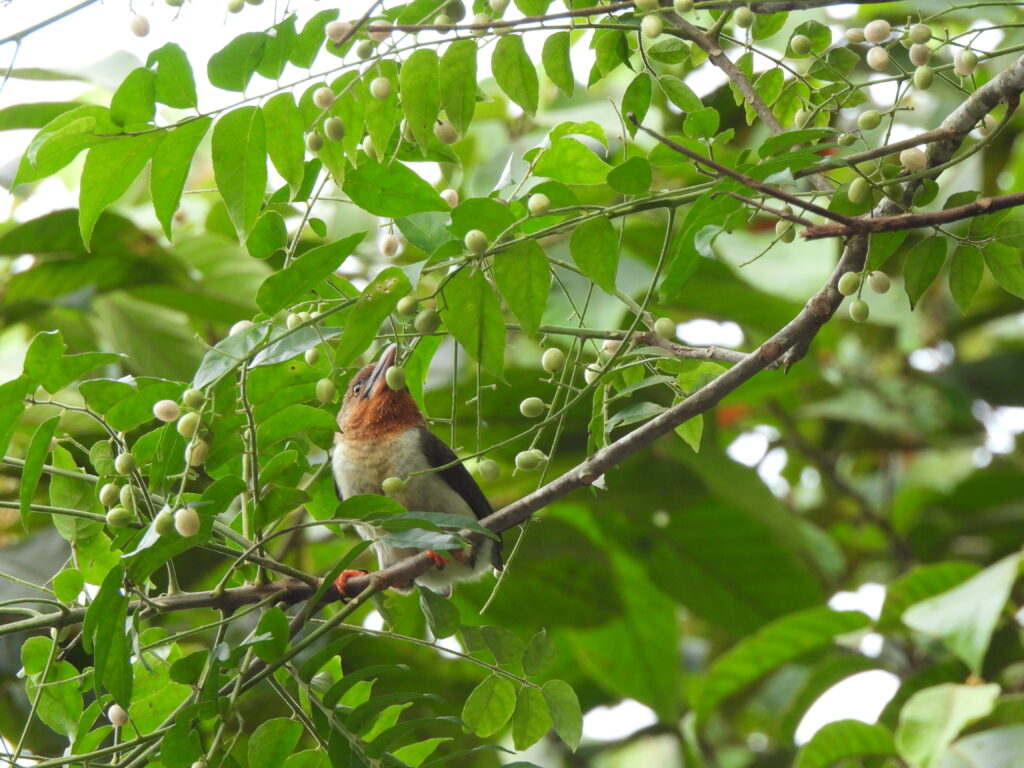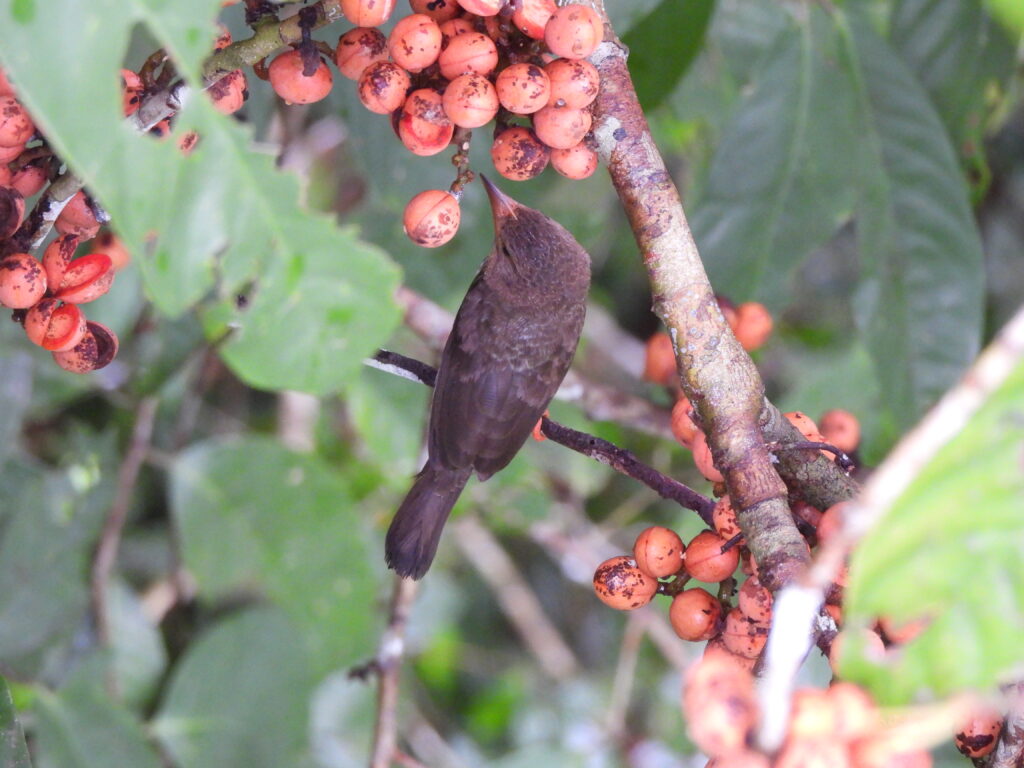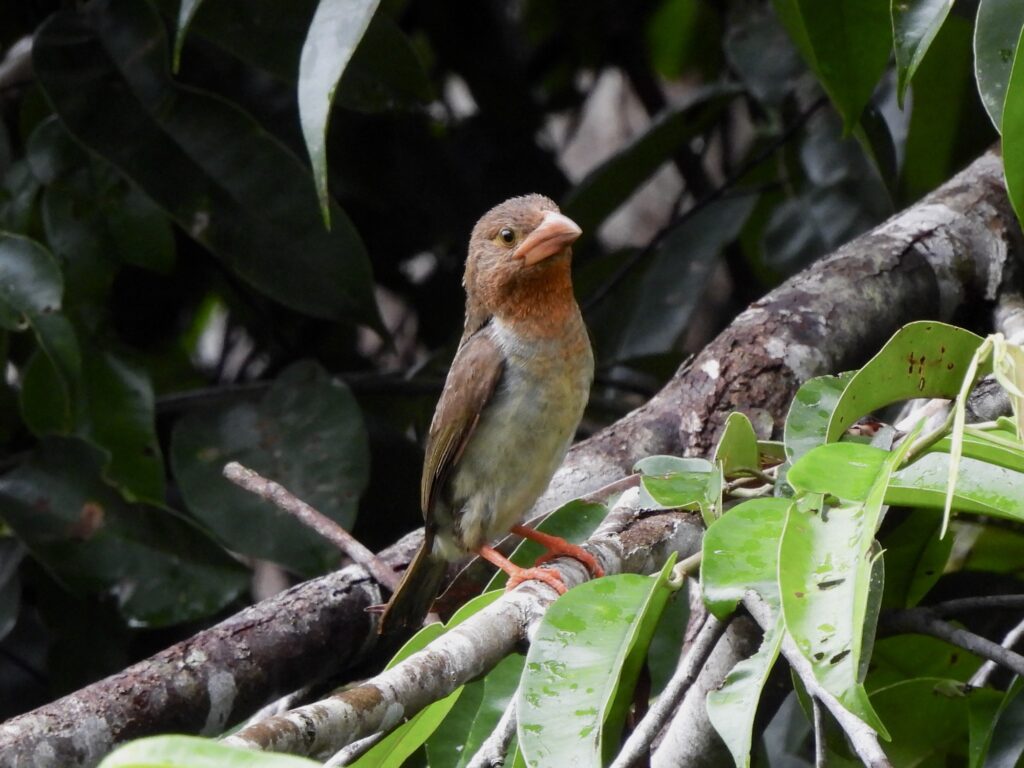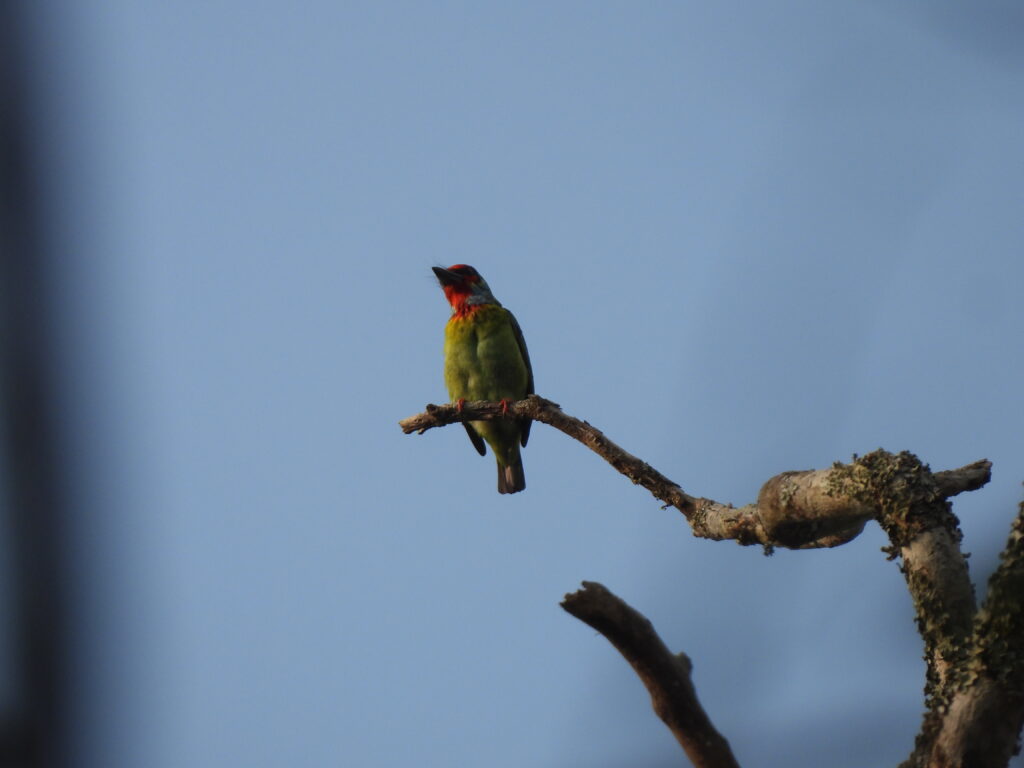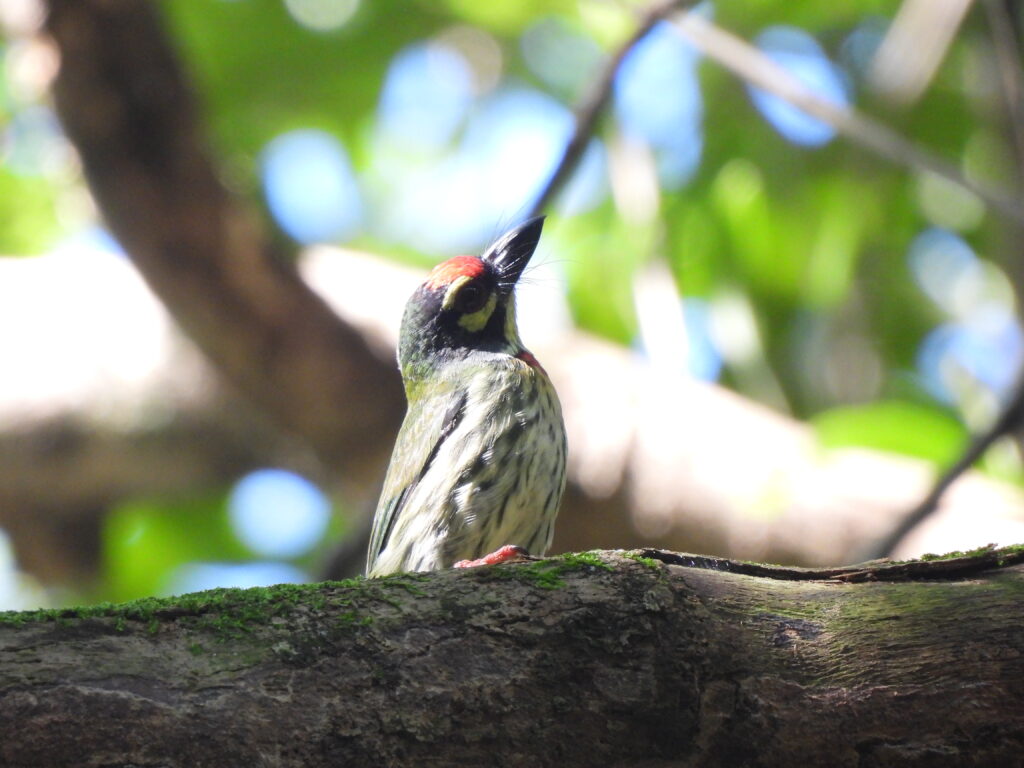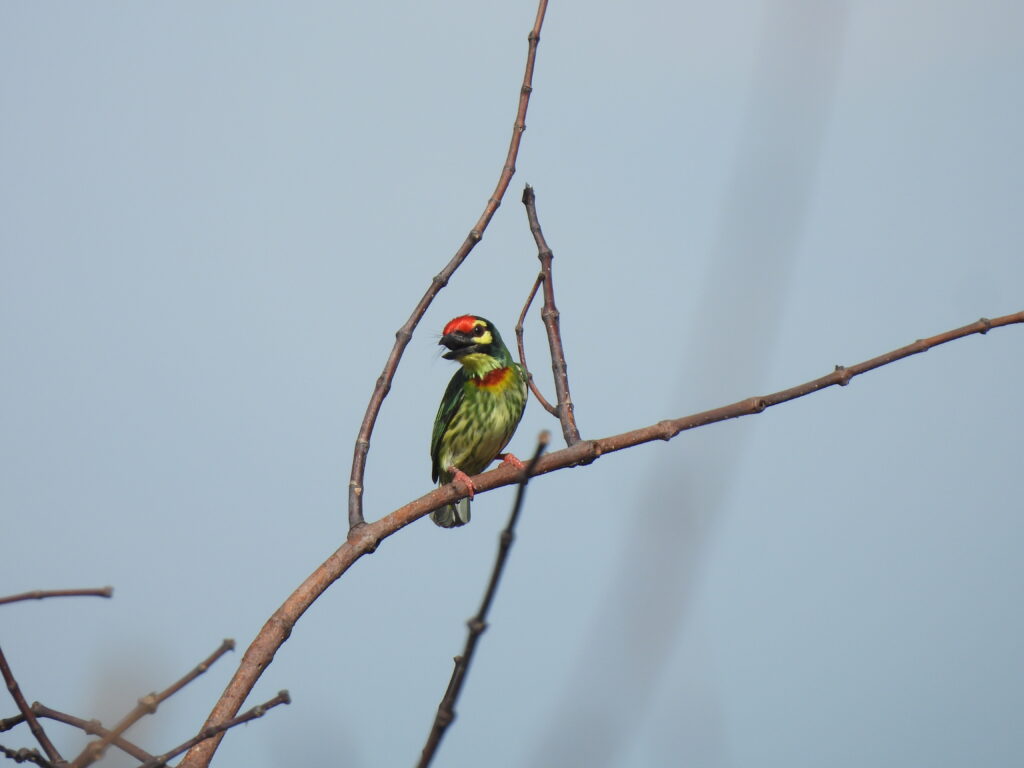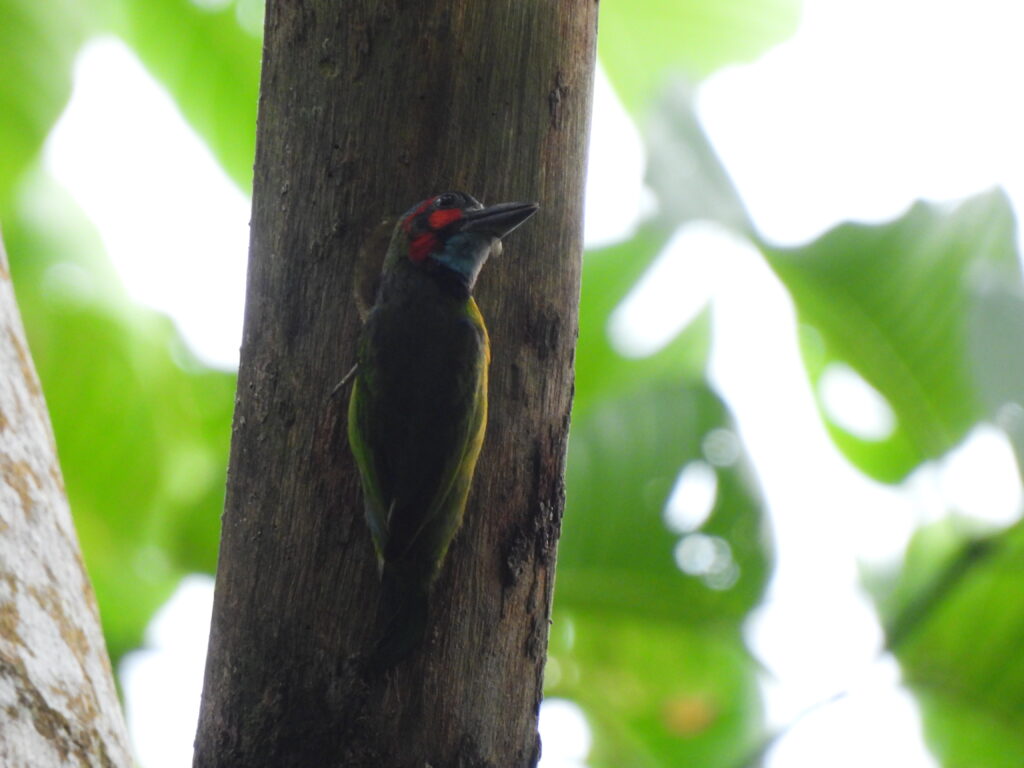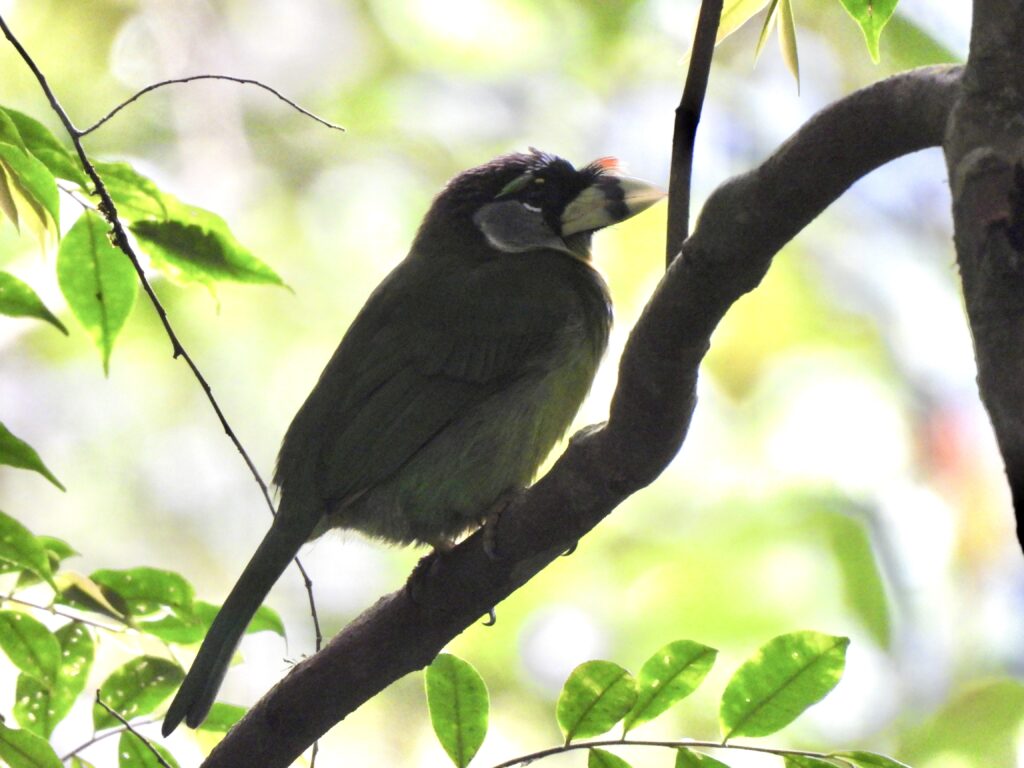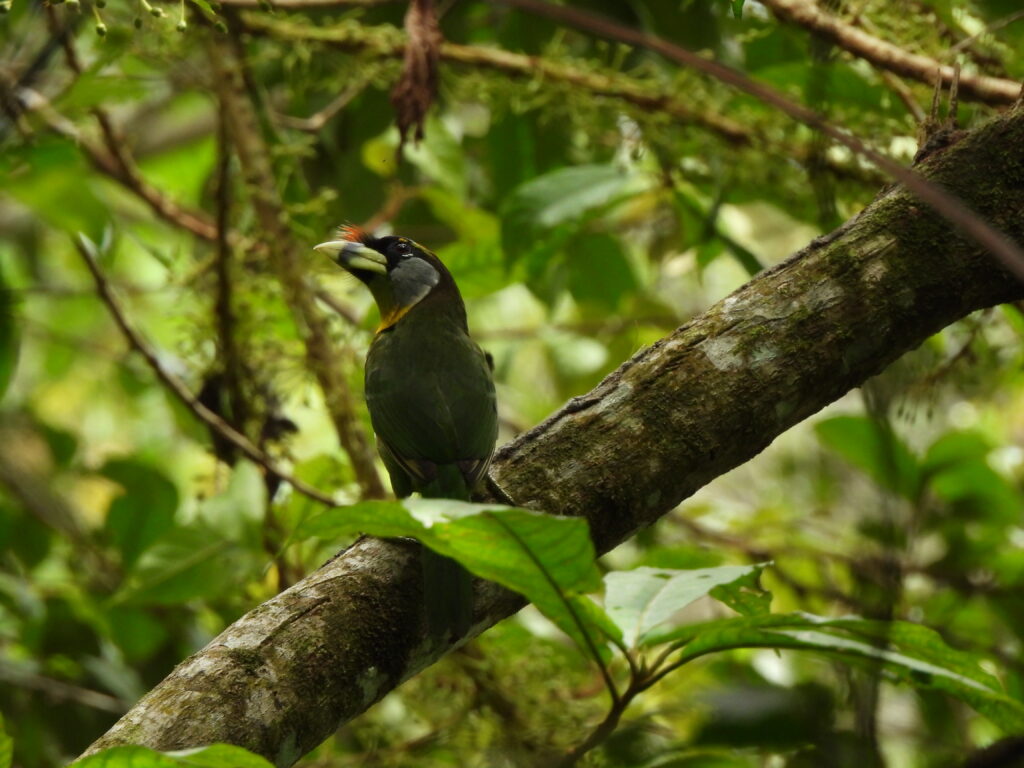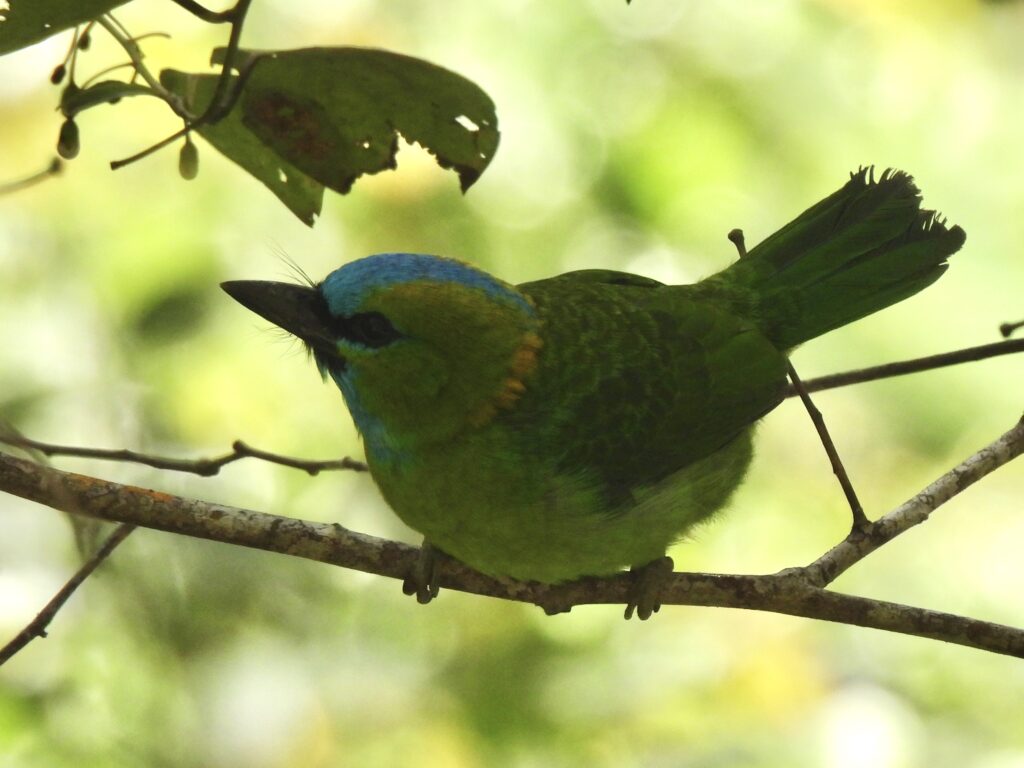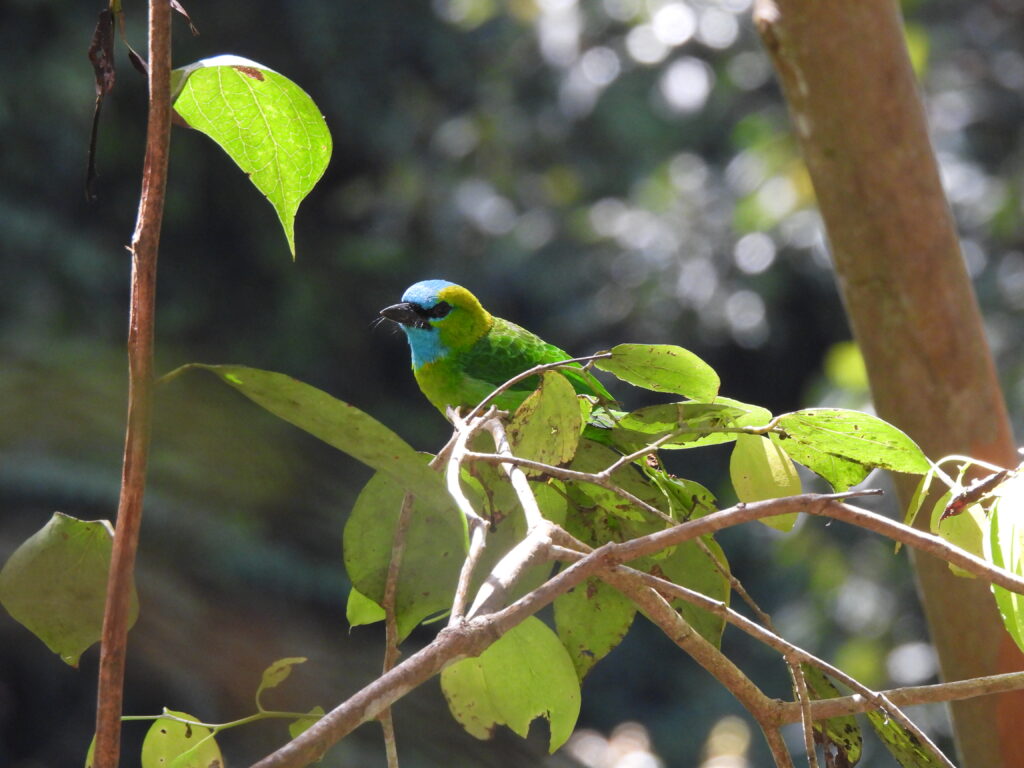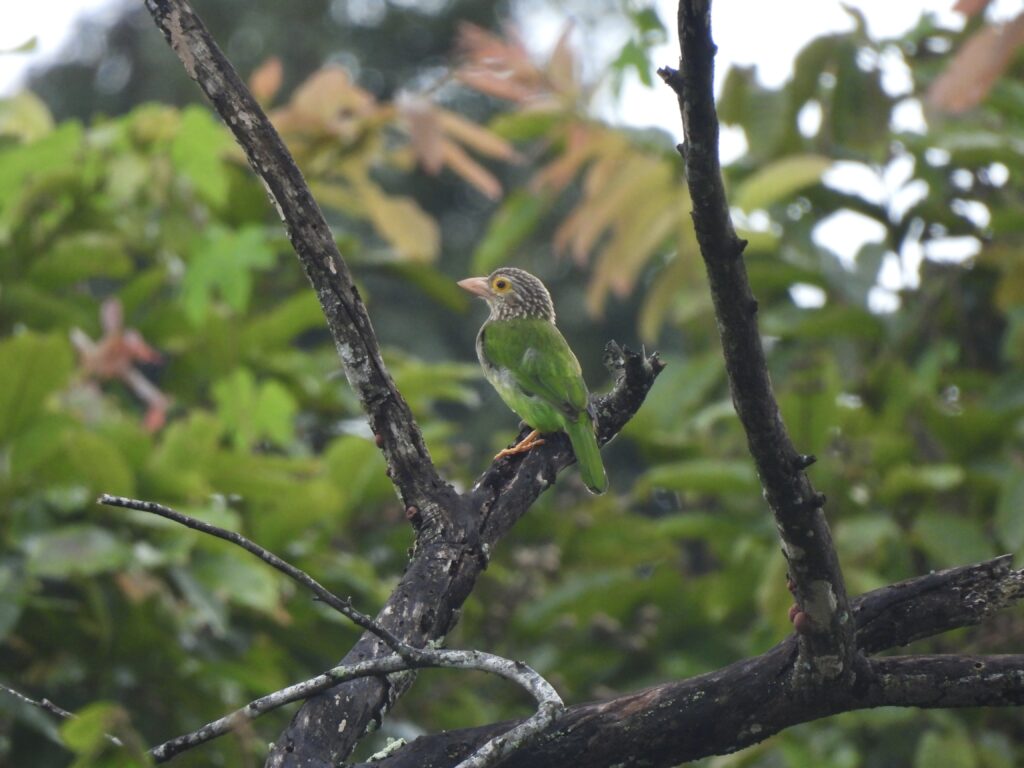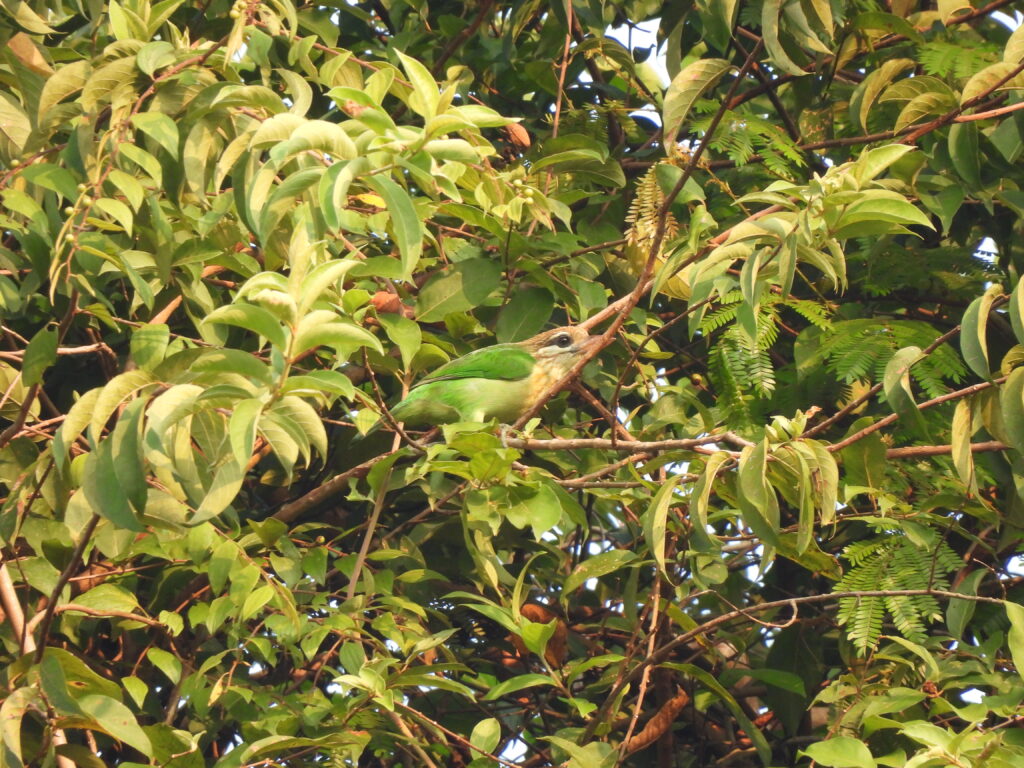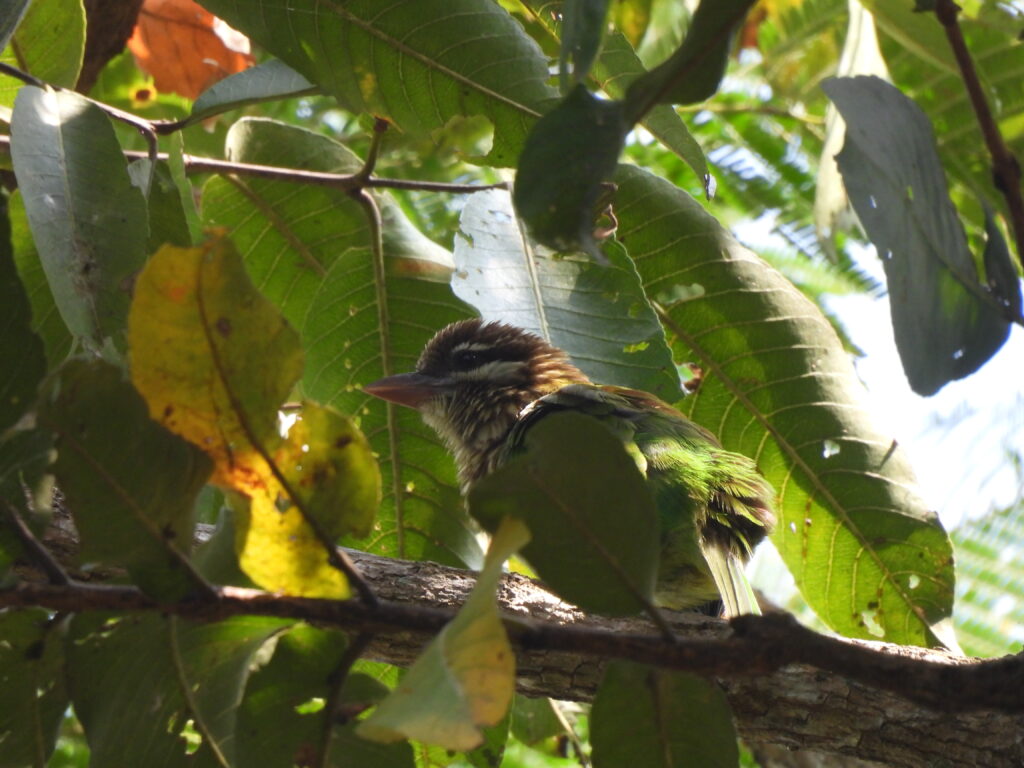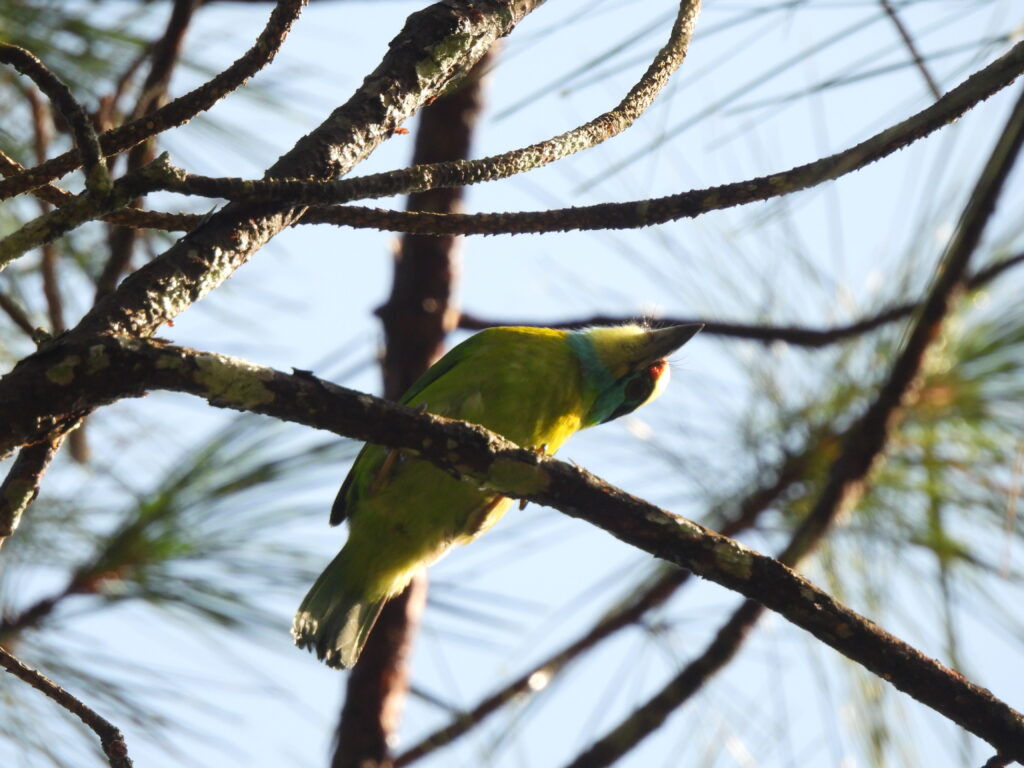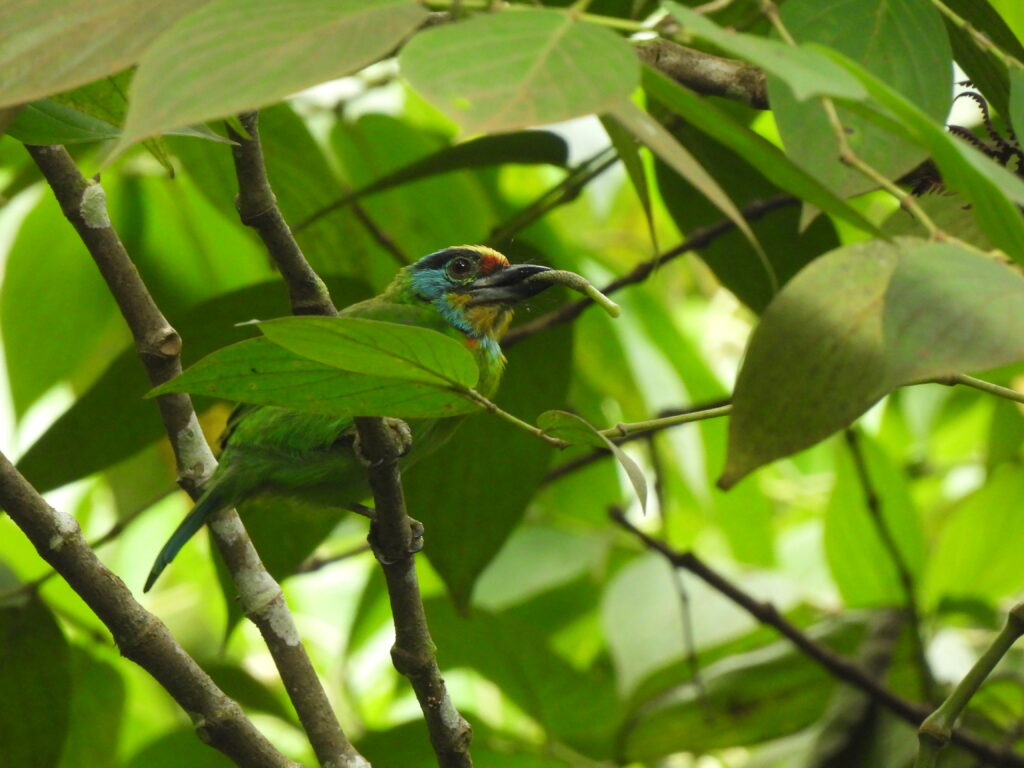The Asian barbets (family Megalaimidae) are a family of birds belonging to the order Piciformes, distributed across the Indomalayan realm. These birds occur in a wide altitudinal range in rainforests, where they emit their particular calls hidden in the canopy. These birds are thus most often heard than seen, despite the bright plumages of many species in the family. This is one of the few families of birds that drill into trees with their beaks to create their own nesting holes, such as woodpeckers. Small parties usually attend fruiting trees in the rainforest and some species have communal roost sites.
The family comprises 35 species in 2 genera. Basal genus Caloramphus (2 species) includes brown, dull birds restricted to Sundaland which call high-pitched squeacks. Genus Psilopogon (33 species) comprises mainly green birds with bright color markings widespread across the Indomalayan realm and call far-reaching long series of repeated notes reminding of frogs or insects. Interestingly, the type genus name Megalaima giving name to the family is currently not in use by any species — a unique case in avian taxonomy.
Brown barbet
Caloramphus fuliginosus
Endemic to lowland forests of Borneo. As its name suggests, mainly brown in color, with bright red legs and a large bill which is pale in females and dark in males. I have seen this species in Borneo.
Malabar barbet
Psilopogon malabaricus
Endemic to well-preserved moist forests of the Western Ghats, where it is usually hard to see. Its call is very similar to that of the coppersmith barbet, which tends to be found in more open areas. I saw this species in the foothills of south India.
Coppersmith barbet
Psilopogon haemacephalus
Widespread in open woodlands and gardens of the Indian Subcontinent east throughout Southeast Asia to the Philippines, Sumatra and Java. Most forms feature a yellow and red face while others have only red markings. Named after its remarkable call, reminiscent of a smith hitting a metal object. I have observed this species in Vietnam, the Philippines, Thailand and India.
Blue-eared barbet
Psilopogon cyanotis
Found in lowland forested areas across Indochina. Mostly green juveniles lacks the complex red-and-blue facial pattern, as is common in other barbet species. I have seen this species in Cat Tien in Vietnam.
Black-eared barbet
Psilopogon duvaucelii
Restricted to lowland moist forests in the Malay Peninsula, Sumatra and Borneo. Extremely similar and once considered conspecific to the extralimital blue-eared barbet. I have encountered this species in Borneo.
Fire-tufted barbet
Psilopogon pyrolophus
Restricted to montane forests of central Malay Peninsula and Sumatra, although it has been introduced to Java. Perhaps the most distinctive and beautiful member of its family. I have observed this species in Bukit Fraser in Malaysia.
Red-crowned barbet
Psilopogon rafflesii
Found up in the canopies of moist lowland forests of the Malay Peninsula, Sumatra and Borneo. It is nearly threatened due to habitat destruction. I have seen this species in its population stronghold within Singapore.
Golden-naped barbet
Psilopogon pulcherrimus
Endemic to the highland forests of Borneo, where it is the barbet found in highest altitudes — from 1,000 m to above 3,000 m. Lacks red marks but sports a bright blue face and its namesake golden nape only visible under certain angles. I have observed this species in Borneo.
Green-eared barbet
Psilopogon faiostrictus
Found deep in lowland and foothill forests of the Indochinese Peninsula. Bright green plumage with a brown streaked head and breast, it conceals in the canopy very well, although its distinctive call alerts its presence. I have seen this species in Cat Tien in Vietnam.
Lineated barbet
Psilopogon lineatus
Found in open woodlands, gardens and forest edge from the Himalayas and West Bengal to Indochina, the Malay Peninsula and Java. It is perhaps the least shy member of its family and often sits in open perches. I have seen this species in Cambodia, Vietnam and in its introduced range in Singapore.
White-cheeked barbet
Psilopogon viridis
Endemic to all kinds of wooded habitats in southern India, where its distinctive call is a neverending part of the soundscape throughout the day, often among the only sounds during the hottest midday hours, present even in urban areas. Despite that, as most barbets, it usually remains well hidden in the canopy. I saw this species in different places of south India.
Mountain barbet
Psilopogon monticola
Endemic to the highland forests of Borneo, where it occurs in an altitudinal range from 600 m to 1,200 m. Hard to see and less colorful than other relatives found in the same habitat, with a bluish head and a bright red small crown. I have observed this species in Borneo.
Gold-whiskered barbet
Psilopogon chrysopogon
Restricted to the high canopies of rainforests in the Malay Peninsula, Borneo and Sumatra. Their namesake large gold patches on the cheeks are the most distinctive feature of the species, although it is most often heard than seen as most barbets. I have only briefly seen this species in Peninsular Malaysia.
Moustached barbet
Psilopogon incognitus
Found in foothill forests across the Indochinese region. Mostly green and somewhat plain, with a bluish face featuring several black lines and bright red paches on crown and front. I have encountered this species in Thailand.
Indochinese barbet
Psilopogon annamensis
Endemic to the Annamite Range between central Vietnam and far eastern Laos and Cambodia. It was once considered conspecific with the very similar black-browed barbet, both sporting a bright blue face with black, light yellow and red markings. I have seen this species in the Da Lat plateau of Vietnam.
Black-browed barbet
Psilopogon oorti
Endemic to highland forests of the Malay Peninsula and Sumatra. Despite being having a narrow distribution, its distinctive song is persistent across its range, informing about its abundance as the birds remain hidden in the canopy. I have observed this species in Bukit Fraser, Malaysia.

